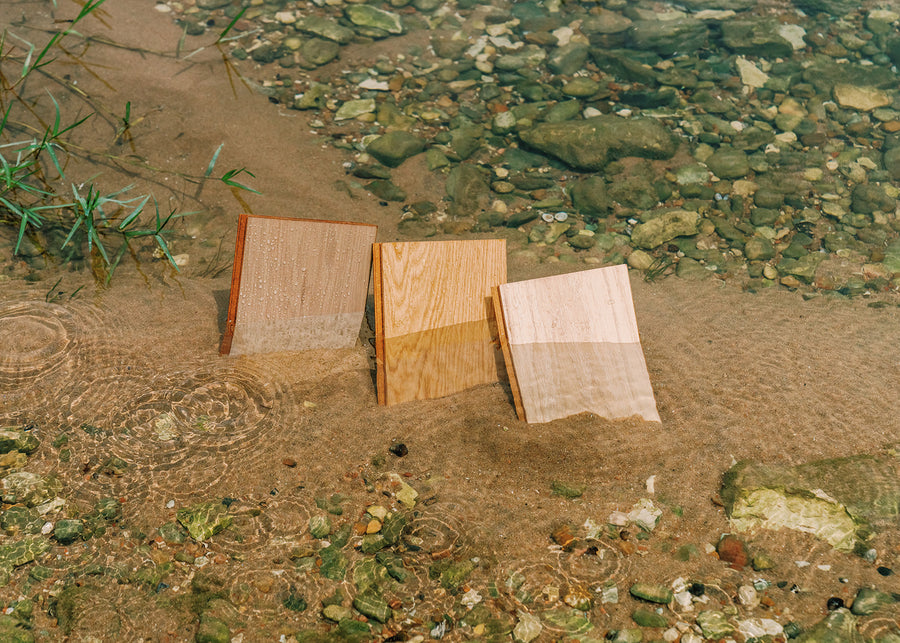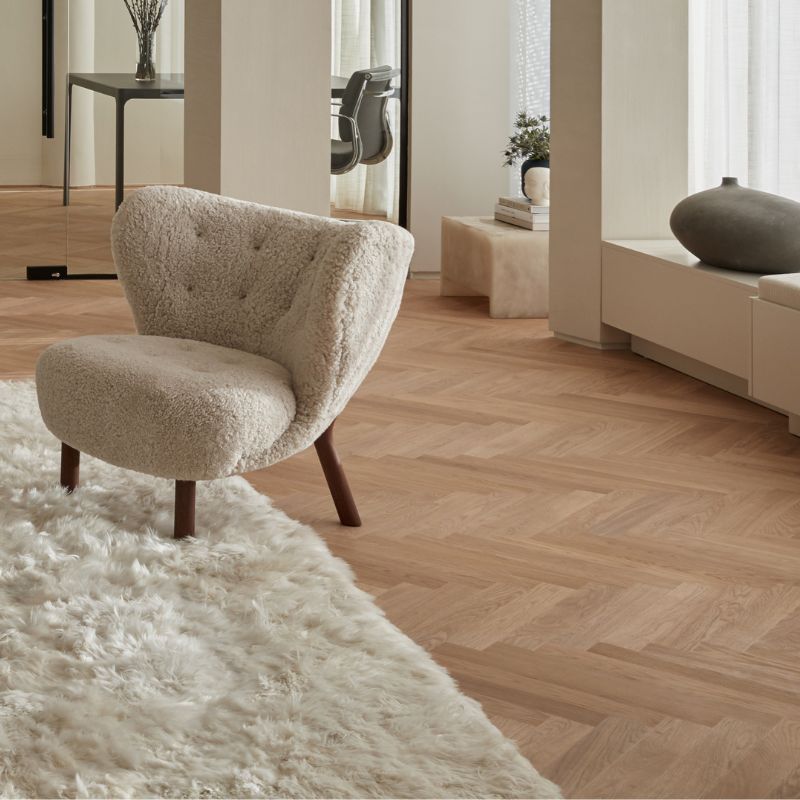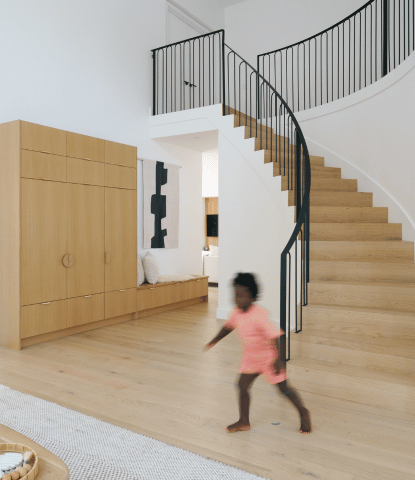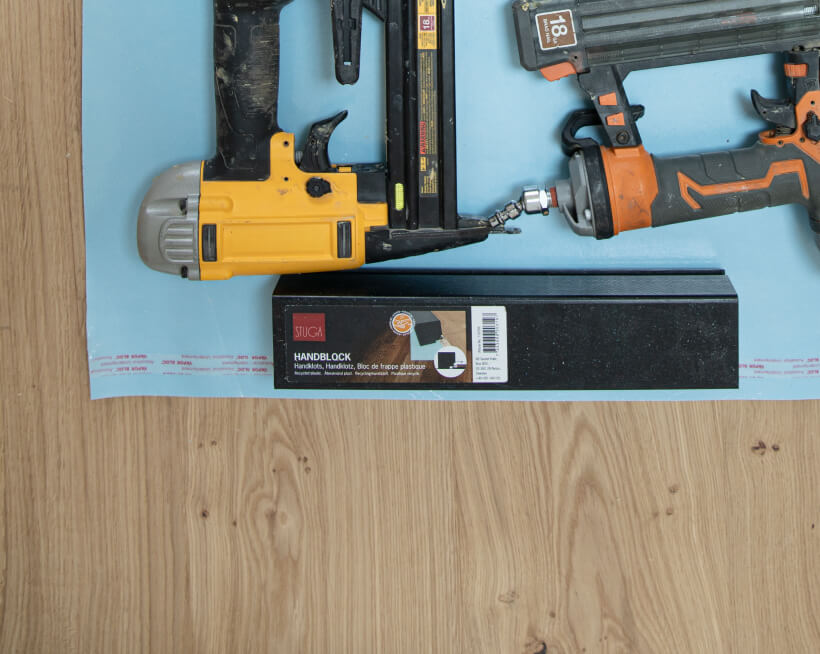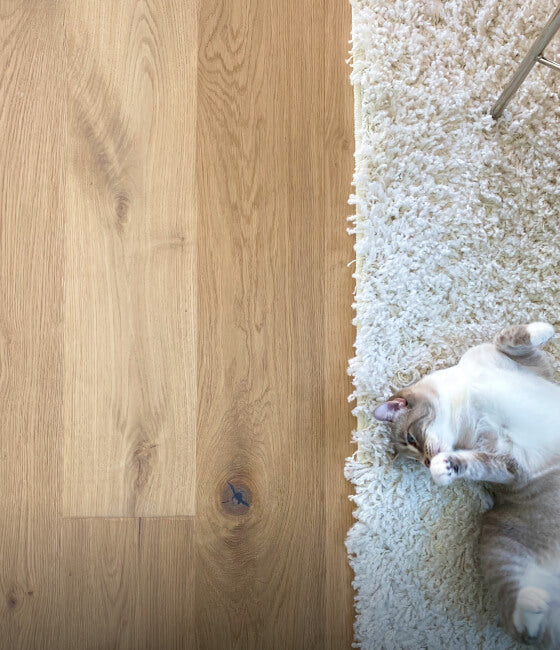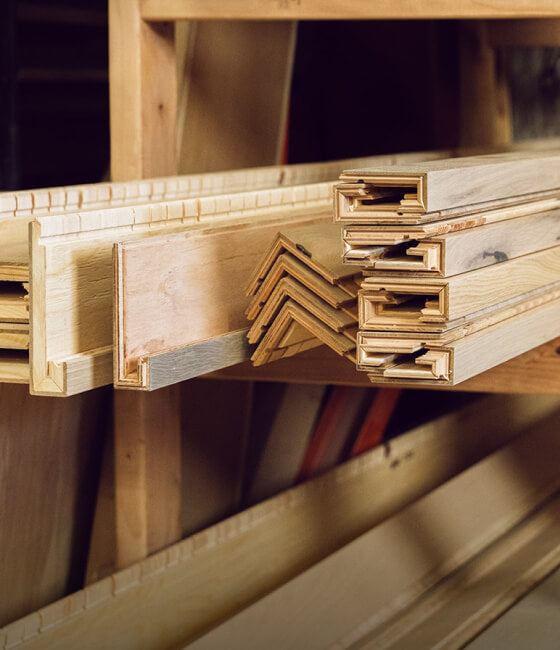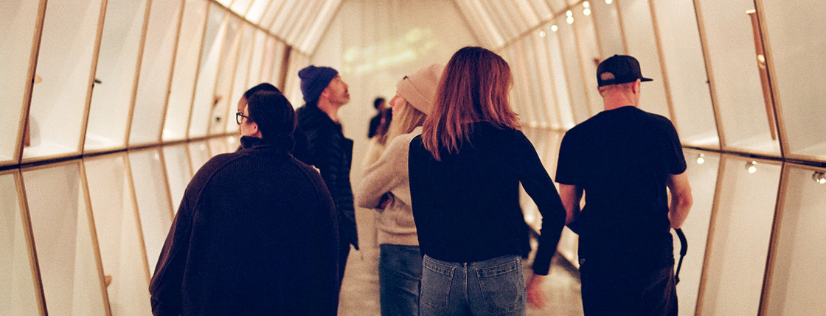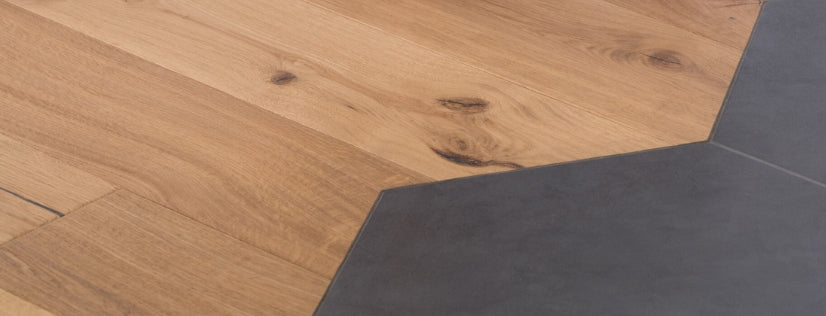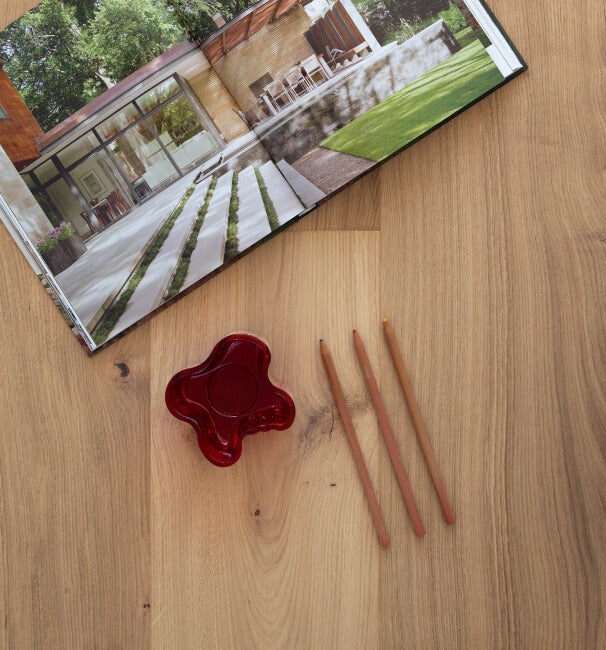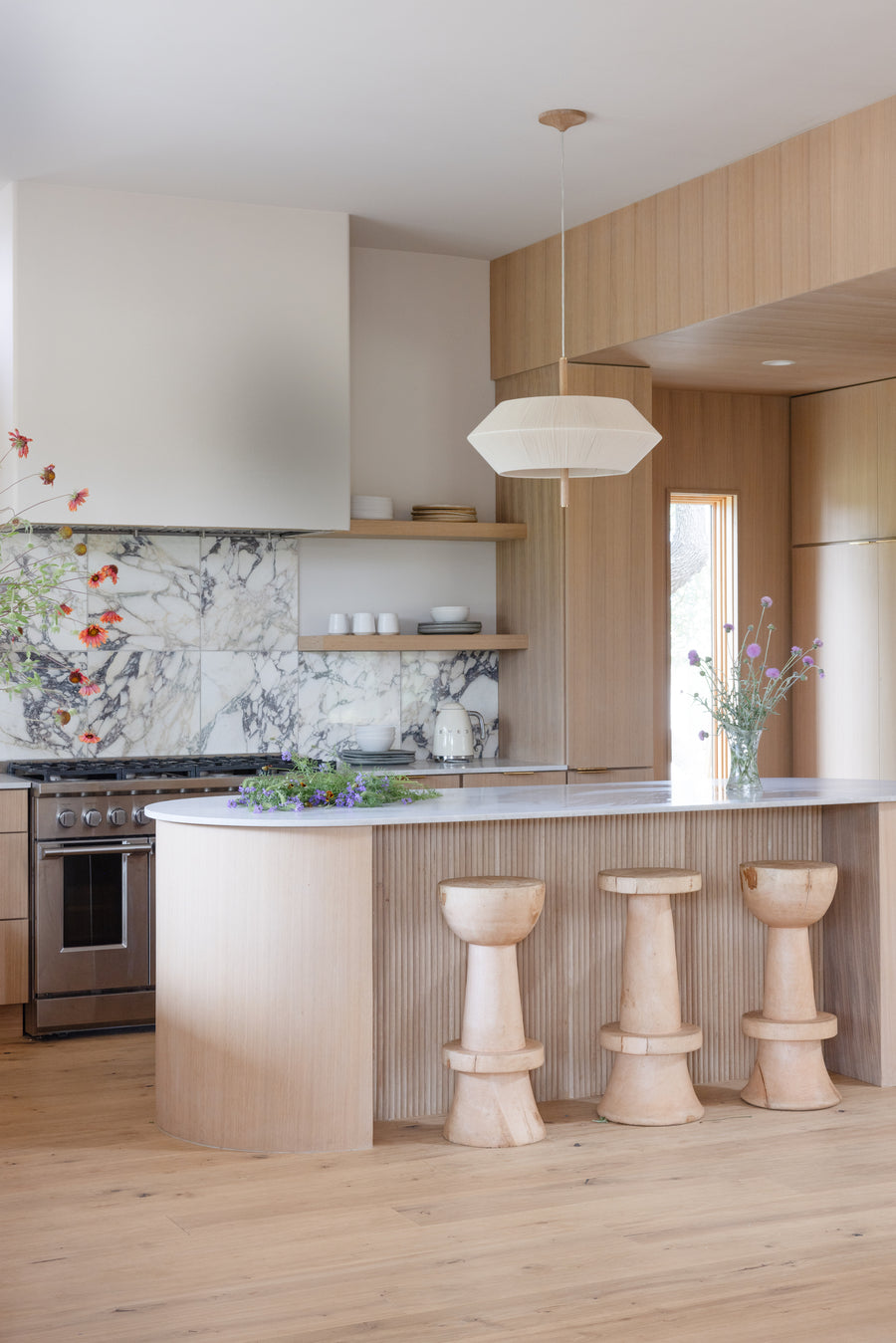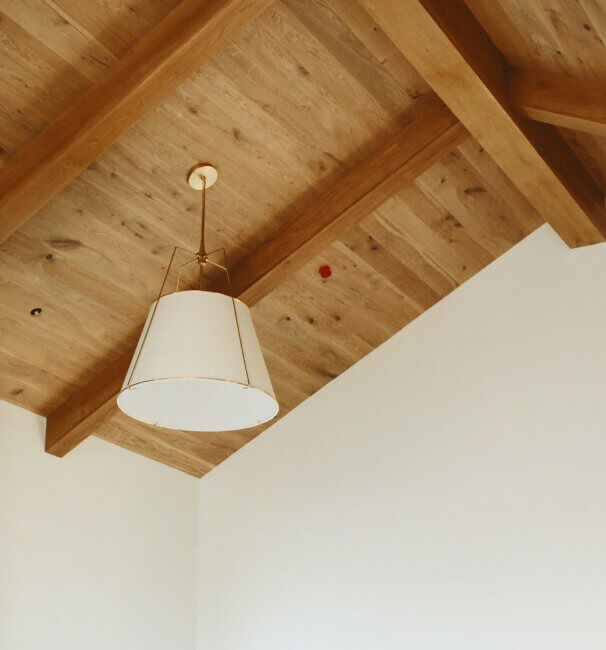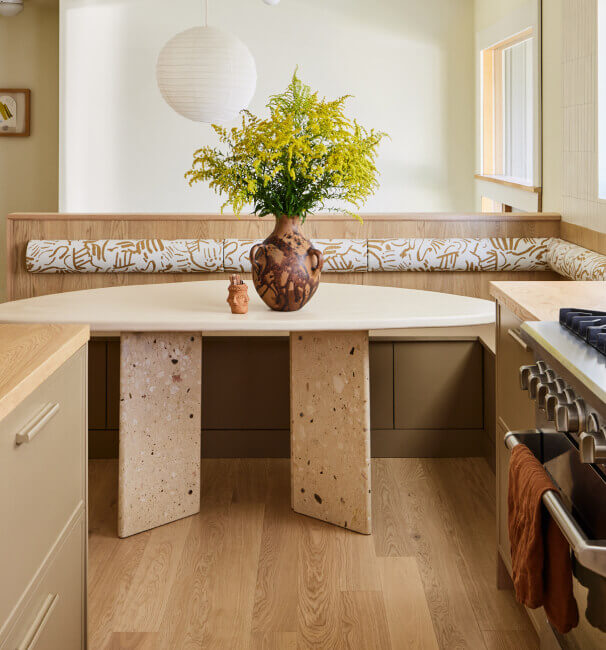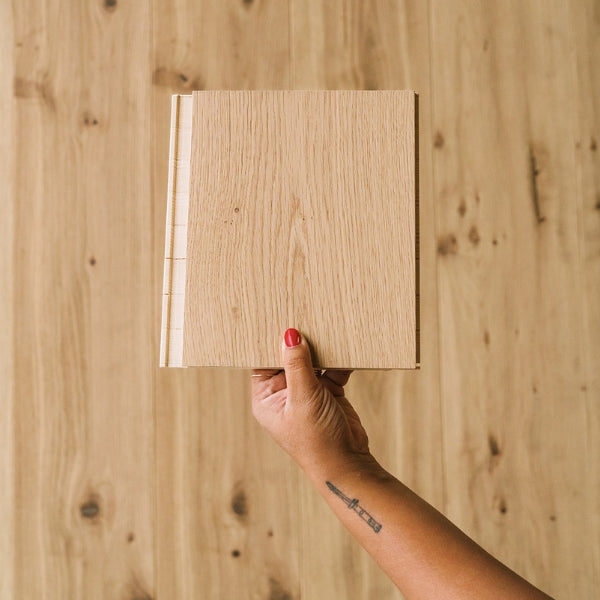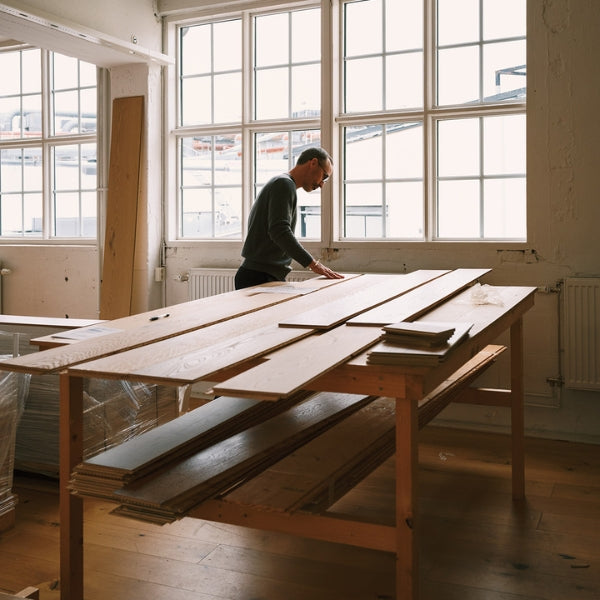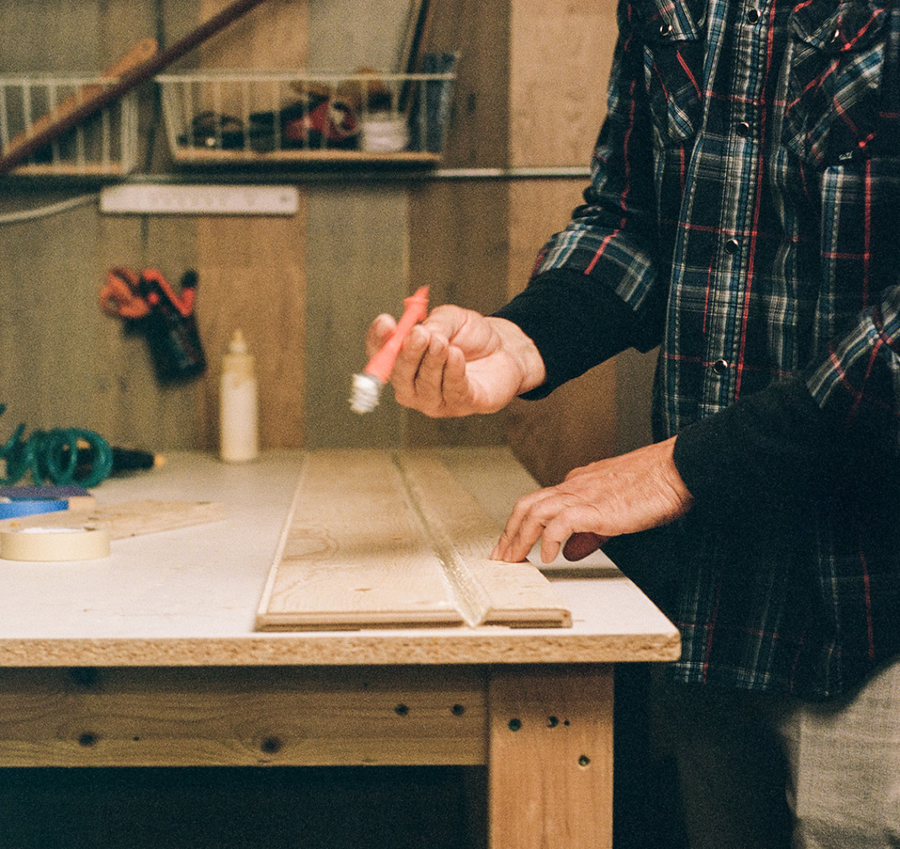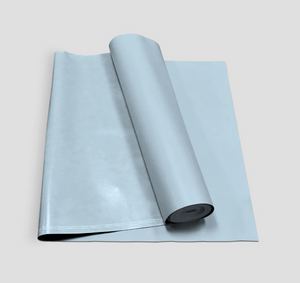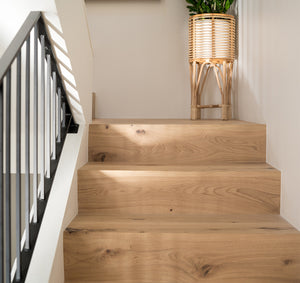February 05, 2025
How to Avoid a Transition Strip at Your Fireplace Hearth
by Haley Holm-Pedersen
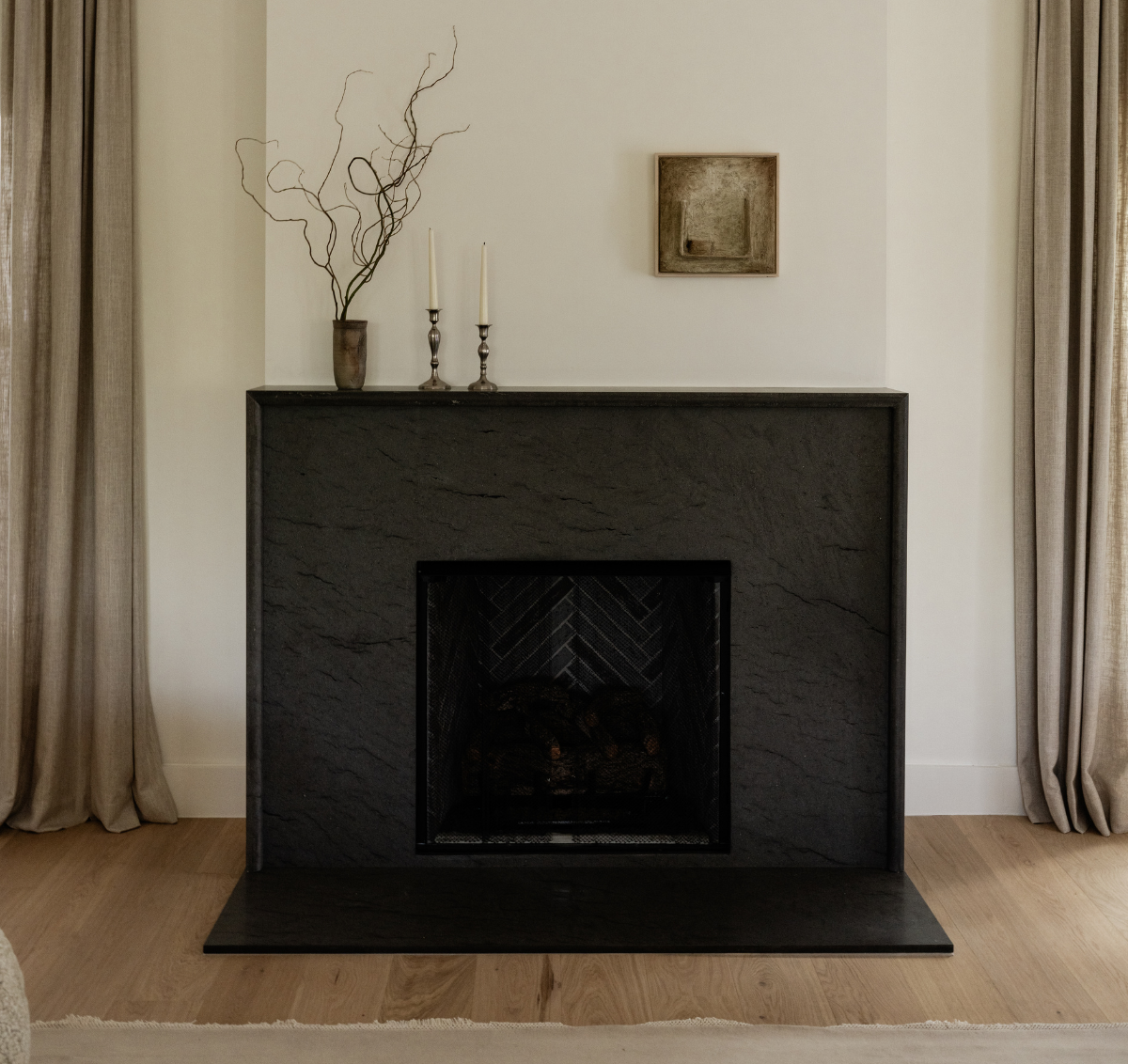
Design: Emily Lauren Interiors | Photo: Madeline Harper Photo | Floor: Greta
A beautiful wood floor should flow effortlessly through your space, but a transition strip at the fireplace hearth can disrupt that seamless look. Many installers default to trim to cover an expansion gap (if the floor is floating) or to hide minor imperfections, but there are better ways to achieve a clean, custom finish. Here’s how to avoid a transition strip and let your flooring meet the fireplace with style.
1. Glue or Staple for a Close Fit
If you're gluing or stapling down your floor, you can bring it right up to the edge of the fireplace—no trim needed. Once the planks are in place, a bead of caulk (matched to your flooring or fireplace) creates a polished, professional finish. This method is a simple way to achieve the clean look we love.
If you want to go an extra step, create a flush border around the hearth using your flooring. Just trim off the locking system and cut the plank to your preferred size. If gluing, simply glue it down and weight it like the rest of your floor. If stapling, you'll need to shoot some small pin nails through the top of the board to secure it to the subfloor.

2. Undercut the Fireplace for a Seamless Look
If you’re floating your floor—or just want the ultimate built-in aesthetic—you can undercut the fireplace hearth. This technique involves trimming the fireplace material (brick, stone, etc.) so the flooring can slide underneath it.
How to Undercut Your Fireplace:
- Grab a scrap piece of flooring and a multitool
- Place the scrap against the fireplace hearth to act as a guide for the cut height
- Use the multitool to trim the fireplace material at that height
- Slide the flooring underneath the cut edge, allowing for the necessary expansion gap if floating
This method works for both floating and glued/stapled floors, but if you're floating, undercutting is the only way to eliminate the transition strip while keeping the necessary expansion space.

Design: KH Interiors | Photo: Hugo Landa Garcia | Floor: Ingrid
The Result? A Modern, Custom Look
By skipping the trim, your flooring and fireplace feel truly integrated—like the room was designed that way from the start. Whether you're opting for a sleek aesthetic or a timeless, classic look, these methods ensure your floor meets the hearth with seamless perfection.
Got questions about your installation? We’d love to help—reach out to us at 1-844-MY-STUGA or hej@stuga.com!

